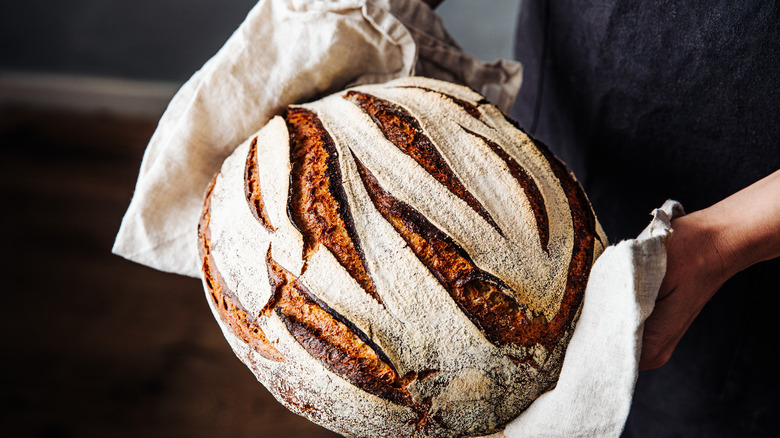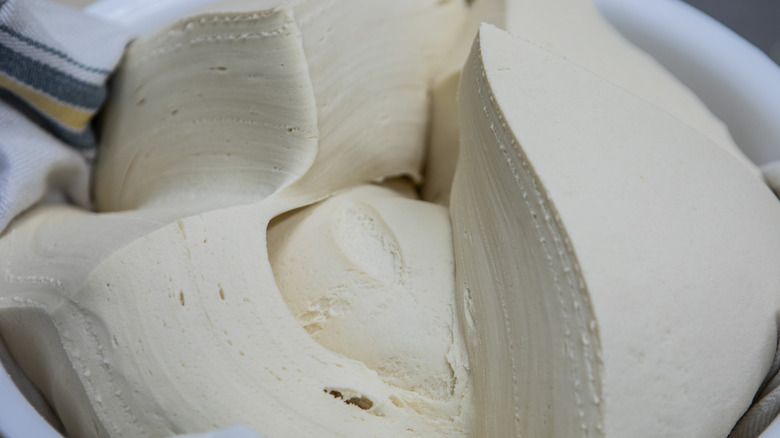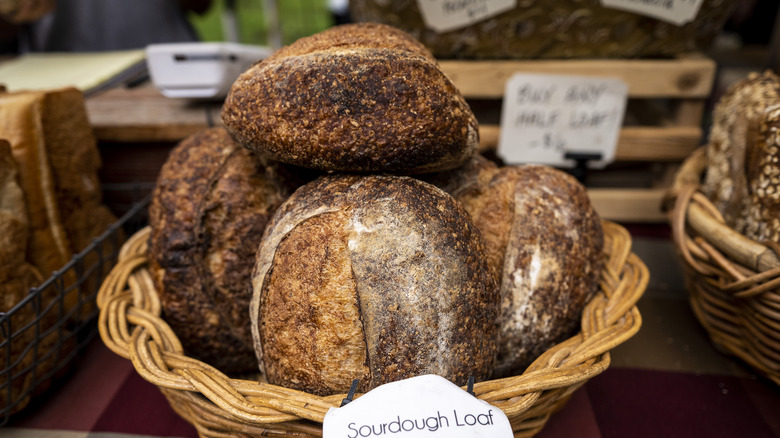Why Sourdough Tastes Different Based On Its Environment
If you've ever had sourdough bread, you know how wildly different it can taste depending on where you buy it. Some sourdoughs are quite mild, while others have a particularly strong and pungent taste.
But what causes this significant difference in flavor in the first place? As it happens, the reason why sourdough's taste can change has to do with each sourdough's terroir. A terroir is just a fancy way of referring to the environment in which the sourdough is produced and refers to things like temperature, air, and more.
Until recently, no one quite knew how the environment affected sourdough's flavor, but thanks to a recent crowdsourced study called Quest for Sourdough, that's all changed. This study collected information from sourdough bakers worldwide to find exactly what makes each loaf taste the way it does. Here's precisely how a sourdough's environment affects its flavor, plus where to go for specific flavor profiles.
How terroir changes sourdough's taste
Sourdoughs are made from a combination of yeast and lactic bacteria. These are living microorganisms, and when paired with flour and water, they trigger a fermentation process. As this process occurs, environmental factors such as humidity or air quality affect the bacteria and the fermentation, giving your sourdough unique flavors.
At the same time, natural bacteria in the air can interact with your fermenting sourdough. These other bacteria can also change the fermentation process slightly. The result is that you can wind up with some pretty unique tastes depending on where you ferment your dough!
Since this is the case, it turns out that certain regions lead to certain types of sourdough. Places like Central Europe, for example, tend to taste like grains such as wheat and barley. You can also narrow things down even more and look at how sourdough's taste changes within individual countries. For example, if you look at Belgium in Europe, you'll notice bakers tend to make sweeter-tasting sourdough.
Join the Quest for Sourdough with your own batch
If all this talk of sourdough makes you curious to see how your environment affects this bread's flavor, try your hand at making your own sourdough bread recipe. To get started, you'll need to make a starter. This is the active culture that will give your bread its flavor!
To make the culture, you'll need 2 teaspoons of sourdough starter — available at most grocery stores — 5 teaspoons of water, and 3 tablespoons of flour. Mix these ingredients in a resealable container and let it sit for at least 12 hours.
Once your starter is ready, move on to the bread. Mix ¼ cup of the sourdough starter to make your bread with 1 ⅓ cups of water in a large bowl. Add 4 cups of flour and 2 teaspoons of salt, and stir until the ingredients form a stiff dough. Cover the bowl and let the ingredients sit for one hour.
Return to your dough and stretch it out when the hour is up. Then, fold the dough in on itself and cover the bowl for another 30 minutes. Repeat this step, but let the dough rise for about seven hours this time. Then, shape the dough and let it rise for one more hour before baking it in an oven at 450 F for about 40 minutes. That's it! You've just made your own tasty batch of sourdough. Now, dig in and see what flavor notes your bread has.


